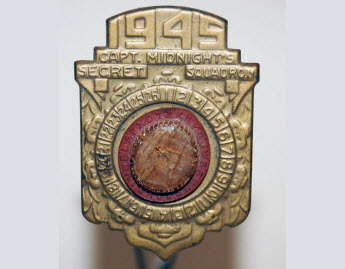Your INTX Secret Tech-Talk Decoder Ring!

If you’re reading this, you’re likely at or on your way to the 2016 Internet & Television Expo, a.k.a. INTX. As is usually the case, the tech-talk scene is oozing with impressively nerdy gibberish. May this handy decoder ring help you navigate it with aplomb.
Let’s start with APSIS — pronounced “app-sis” — which stands for “Adaptive Power System Interface Specification.” It hails from the world of energy sustainability, specifically the SCTE’s Energy 2020 program. The gist of it is this: A lot of the big stuff in broadband/cable networks use electricity all the time, and not as a function of usage.
But what if you could “turn down” or turn off certain components when they’re used less, say, in the middle of the night? That’s the aim of APSIS. It’s a big deal because it’s that outside plant — the “access plant” — that represents about 80% of a typical service provider’s annual spend on electricity.
Capacity is perennially a trending topic at gatherings such as INTX, and this year offers no shortage of tech-talk around it. Watch for a lot of discussion about threading fiber deeper and deeper into neighborhoods, thus making serving areas smaller and smaller — so that at some point, when Bandwidth Hungry Harry wants a direct-fiber connection, it’s not a budget-buster to get it to him.
Related gibberish that’s good to know: When people start talking about “N+0,” or “N+1,” they’re talking about the number of amplifiers after the node (where fiber optics hand off to coaxial cable). The lower the better, and it doesn’t get much lower than zero.
Taking fiber deeper also means an assured increase in the number of nodes — by 3 times, in some estimates, and depending how deep the fiber reaches. That’s why energy efficiency is a constant refrain in design discussions about next-generation gear. It’s also why the term “remote PHY” keeps popping up, too, where PHY stands for “physical layer.”
“Remoting” the “PHY” sits (as one of several terms) in the vast bucket of tech-talk that is Network Functions Virtualization and Software-Defined Networks. The idea: Take some of the stuff out of those nodes and put it “higher up” in the network. Two INTX tech sessions will attempt to tackle that chewy topic.
The smarter way to stay on top of the multichannel video marketplace. Sign up below.
Speaking of the tech-paper scene at this week’s Spring Technical Forum — it’s the mother lode of solid engineering information, every year, and this year doesn’t disappoint. My favorite for the oh-so-nerdy title: “4096 OFDM implementation on the HFC Plant with Fiber Deep and Distributed Access Architecture,” by Cisco’s Maxwell Huang.
My personal/professional favorite 2016 tech paper — and as someone with a long and deep history of concern about the super-skinny “upstream path” (Internet-facing, from the home) — especially as webcams proliferate: “Full Duplex DOCSIS,” by John Chapman and Hang Jin, with bonus points for the uber-succinct title.
Here’s why this matters: “Full duplex” is when a transmission medium can transmit in both directions, simultaneously. (By contrast, a walkie-talkie is “half duplex,” as in, “hello, over.”) You can’t do full duplex if there are amplifiers anywhere along the communications path, because they contain the (diplex) filters that define the downstream and upstream signal directions (which brings us back to “N+0”).
Yes, there are ways to widen the upstream from its current boundary (42 MHz) to other, higher/wider boundaries — but with full duplex, there’s no need to keep revisiting amplifiers to change out the filters, to go to the next step wider, and the next one after that. It’s immediate, dynamic, and adjustable. That’s pretty big stuff. The question to ask, should this come up in your cocktail conversations, is this: “Sure, Joe, but how non-trivial is it to get there?” (Engineers tend to cleave to that word “non-trivial.”)
Relatively new this year but big for automation and, initially, making customer care and product development better is the landscape of machine learning, artificial intelligence and cognitive/neural adaptations; there’s a whole session on it on Tuesday at 3:30 p.m., led by Comcast executive vice president and chief technical officer Tony Werner.
For the show floor — mind you, this is being written the week before INTX — here are a few pointers on some “under the hood” things that matter: Almost all talk about “smarter WiFi,” and “better/smarter connectivity,” will be anchored by the next version of the Reference Design Kit (RDK). That’s what gave rise to Comcast’s X1 line, Liberty Global’s “Horizon” navigation and all the stuff that’s generally received as “gorgeous navigation.”
Next up is “RDK-B,” where the “B” stands for “broadband,” and aims to do the same level of “making stuff better” for cable modems, gateways, WiFi spigots, and all the stuff that feeds our online lives.
That’s a quick look at the tech talk of this year’s INTX. You are now in a good position to play “stump the chump” with impressively nerdy fare! Good luck and see you there.
Stumped by gibberish? Visit Leslie Ellis at translation-please.com..
(Photo Credit: Captain Midnight Decder Ring, by Sobebunny - Own work, CC BY-SA 3.0, https://commons.wikimedia.org/w/index.php?curid=7274827)
